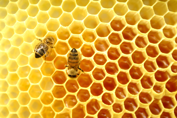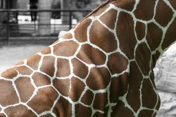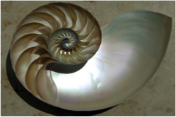Why nature loves patterns
Presented by Dr Steven Roper
Geometric patterns appear everywhere in nature: beehives, the skin of a giraffe, seashells, rock formations…
 |
 |
 |
| Hexagons in a beehive | Polygons on a giraffe’s skin | Spiral in a shell |
The hexagon, in particular, is ubiquitous! But why is it so special? Well, one reason is that the plane can be tessellated with identical hexagonal tiles. This is a property that only the triangle and the square share with the hexagon. But we will see in the Masterclass that the hexagon is better: compared with a triangle and a square with the same perimeter it has a larger area. For the bees, this means that with the same amount of wax they can build a beehive that can store more honey. How convenient!
The same question of what the 'best' tessellation of three-space is leads us to consider a famous structure proposed by Lord Kelvin. Lord Kelvin was a mathematician and natural philosopher at the University of Glasgow. He was appointed Professor at Glasgow in 1846, aged only 22 years old!
Some of his equipment is on display at the University's Hunterian Museum and a blue plaque in Professor's Square indicates where he lived.
What if we are allowed to tessellate the plane using tiles of several different shapes? Well, there are infinitely many ways of doing this, including Archimedean, Voronoi and non-periodic tilings.

